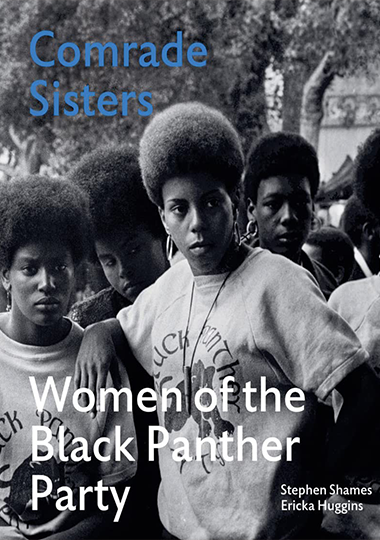
By Stephen Shames and Ericka Huggins
This beautifully-produced book is a visual and written record of the contribution of the women of the Black Panther Party (BPP). In the preface Stephen Shames writes that he photographed the BPP from 1967 to 1973 and “witnessed the positive power of the women as they served the people”.
Women made up at least two-thirds of the BPP’s membership. Angela Davis in a foreword says that the unacknowledged role of women changed the “masculinist premises that tend to define the most well-known black radical organisation of the 1960s”.
Ericka Huggins writes that these women “are not special in some way that separates them from others.” “They are simply women who whether at the age of 12, 14, 16, 18 or 21 decided that there had to be ‘a way out of no way’ for black and poor people,” she writes.
As well as stunning images, the book collects dozens of women’s personal experiences of their BPP activity. These bring home the crucial role women played in the struggle, and the power of the idea of militant resistance.
For example, Carol Granison from the Oakland, California, BPP chapter, writes, “What drew me to the Black Panther Party was that the party had a very clear platform. We need food. We need shelter.
We need them to stop arresting us for no reason. Stop the killing of Black people! It appealed to me intellectually. Finally, somebody had said something that made sense.”
Comrade sister Cheryl Dawson put the call to action plainly—“I joined the Black Panther Party because my soul was on fire.
”There are many accounts of women being involved in the programmes around sickle cell anaemia, schools and the free breakfast for children initiative. This could be seen as the “women’s role” in the struggle. But there are also some accounts of women in the frontline of developing political ideas.
Malkia Mac Devich-Cyril remembers her mother Janet Cyril who “was a regular contributor to the party newspaper”. She was “drawn by Fred Hampton’s idea of transracial alliance along the lines of class. She learned about the relationship between the black struggle and the class struggle of the white working class.
”And she goes on to show the way that fighting one form of oppression opened up the movement to tackling other ways that people are put down and divided.
“She also felt that the Black Panther Party was one of the most explicitly feminist black organisations that she participated in,” said Devich-Cyril. “It’s the reason why she could openly support me as a queer person, coming out at age 12.
“The party was the only black organisation in the country at that time that had a commitment to dealing with and working with queer people.”
Almost inevitably women faced sexism at some points within the organisation, but they both fought it and fought the anti-racist, anti-system battle at the same time. I guarantee this book will give you new respect for a generation of women militants.




